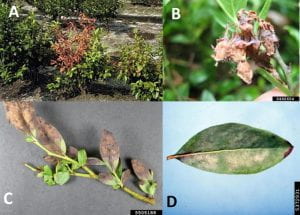Strategies for Effective Management of Botrytis and Anthracnose Fruit Rot in Strawberries
Dr. Mengjun Hu, Univ. of Maryland, and Kathy Demchak, Penn State Extension
Managing gray mold (Botrytis) on strawberries is increasingly challenging because of fungicide resistance development, plus a new Botrytis species that is less susceptible to fungicides is becoming common in the mid-Atlantic region. Resistance to certain fungicides is also a problem in management of anthracnose fruit rot. This article describes disease management strategies designed to slow further resistance development, while also providing specifics for managing our two most common fruit rots.

First, what’s new with Botrytis. There are at least 4 species of Botrytis that can infect strawberries, but only two of them have been commonly found in the region. Botrytis cinerea, the species traditionally infecting strawberries, is present nearly everywhere and affects many horticultural crops. Recently another species, Botrytis fragariae, has also been found and as its name indicates, is more specific to strawberry plants. It appears to overwinter on strawberry plant tissue, and preferentially colonizes blossoms early in the spring, causing them to “turn brown and dry up”. While sometimes only one of these species is present, both can be present at the same time in a field and even in the same blossom. Using certain fungicides selects for resistant strains of either species, and also preferentially selects for one species over the other. This means that both species have resistance to multiple fungicide groups, and both species can survive in fungicide-treated fields.
How can you tell if the newer species of Botrytis might be present in your fields? While B. cinerea (the traditional species) is often isolated from both flowers and fruit, B. fragariae (the new one) is often isolated from flowers, and it has been shown that B. fragariae infection was much more aggressive on strawberry flowers than fruit. If you see larger-than-usual numbers of blossoms turning brown and shriveling (not to be confused with frost damage, which blackens the center of the flower), it may be prudent to choose fungicides as if B. fragariae presence had been confirmed in your field. If you see no more symptoms on the flowers or buds than usual, you may be able to assume that the new species isn’t present, or at least not to a great extent.
